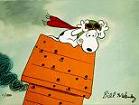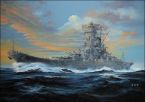GoodGuy
Posts: 1506
Joined: 5/17/2006
From: Cologne, Germany
Status: offline

|
quote:
ORIGINAL: Canoerebel
Which do you think cost the Axis Powers the greatest strategic harm in World War II?
1) Japanese failure to equip fighters with self-sealing gas tanks and armor
2) German failure to equip heavy tanks with machine guns
3) German failure to have fighters with sufficient legs to escort bombers deeply into Britain
TBH, none of these.
1) Japanese fighters were sufficient and partially superior when fighting US opponents, for quite some time. Japan's production figures (and the resource situation) could just not make up for the losses sufficiently, PLUS the US plane designs and the technological equipment improved dramatically, leading to US nightfighter capabilies ~1944/45.
Also, quite some US planes, while some models were less agile, offered reasonable protection for the pilots, that's the interesting detail here. So if a pilot had to disengage because his plane got shot up, or if he had to land/bail or even touch down on the water, it was the level of protection that helped him to stay alive and helped the US to maintain a proper pilot pool, while Japan's pool of able pilots proceeded to decrease to a really threatening low level in 1944.
The US (just like the Germans) also employed a search and rescue procedure with seaplanes (the Germans used seaplanes and torp boats), which ensured that some downed precious pilots could fly again.
2) German heavy tanks had a sufficient amount of MGs.
The Pz.Kpfw VI Ausf. b (King Tiger) had a MG34 in the front glacis (bow-MG), a coax. MG34 in the turret and an AA-MG on the turret (roof).
I could imagine that you might have had the Ferdinand (later designated Elefant) in mind there, but this was rather a self-propelled AT-gun than a heavy tank, and only the 90 Porsche chassis/running gears employed in the Elefants were originally meant to equip a heavy tank, the Tiger I, since Porsche's prototype was dismissed, so these parts became available. The first version had no MG. After Kursk, 48 of the remaining 50 Elefants were upgraded with a frontal coax. MG.
Hitler's hope (that the Elefants would have a major impact on Russian tank formations) was spoiled by the lack of mechanical reliability in the main, and not by Russian infantry that managed to get close to these beasts.
There are accounts that the Elefants of the 653. Schwere Panzerjäger-Abteilung and the 654. Schw. Pz.Jg.-Abteilung (translates to "tank hunter" Abteilungen, well tank destroyer - if you will), each equipped with 45 Elefants, destroyed over 500 Russian tanks, 20 AT guns, ~100 guns (inf guns, arty, and the like).
An elefant consumed ~1000 liters of fuel per 100 km, because the 2 Maybach motor engines powered 2 Siemens electric engines, which in turn powered the carriage (think they really wanted a cumbersome drive, eh?  ). ).
I'd say a missing MG wasn't the real problem there, nor did it do ANY "strategic harm".
Loosing 40 of those beasts wasn't a strategic letdown either, especially if you consider how many other German tank units were involved.
3) German fighter cover over London (for example) was not possible, only the Me 110 had the range and a somewhat acceptable time frame for combat (IIRC minutes only, though).
The Me 109 used to have a bit less than 10 mins over the British coast, especially if they started from Luftflotte 3 airfields like Le Havre (III. JG2, some vets said they had only 2-4 minutes for enemy engagements), Cherbourg, Amiens and other distant airfields (and they did, eg. Jagdfliegerführer 3). Even some Luftflotte 2 Me 110 units had to watch their fuel, if you consider that they had to make it to London and back home, as some of these fields were based at rather distant locations like Abbeville (Me 110, ZG 76), Yvrench (Me 110, ZG 26) or Laval (Me 110, ZG 76), for example.
You should have put different options for the aim to discuss "strategic harm" to the Axis' course. There are so many German mistakes, but I'll list a few examples, so you can see that you clearly missed the goal when you listed those options as serious strategical impacts.
|
 Printable Version
Printable Version













 New Messages
New Messages No New Messages
No New Messages Hot Topic w/ New Messages
Hot Topic w/ New Messages Hot Topic w/o New Messages
Hot Topic w/o New Messages Locked w/ New Messages
Locked w/ New Messages Locked w/o New Messages
Locked w/o New Messages Post New Thread
Post New Thread